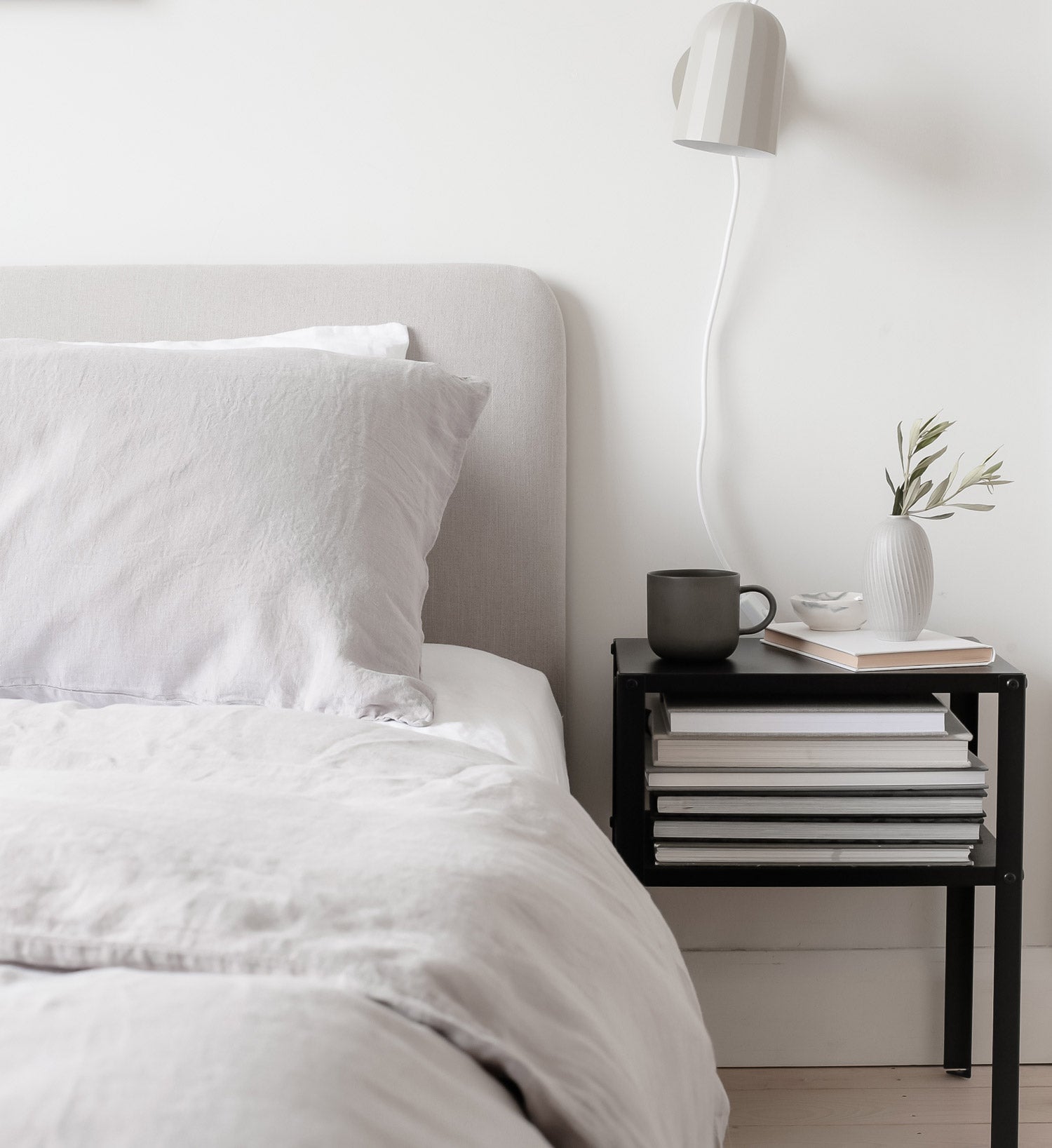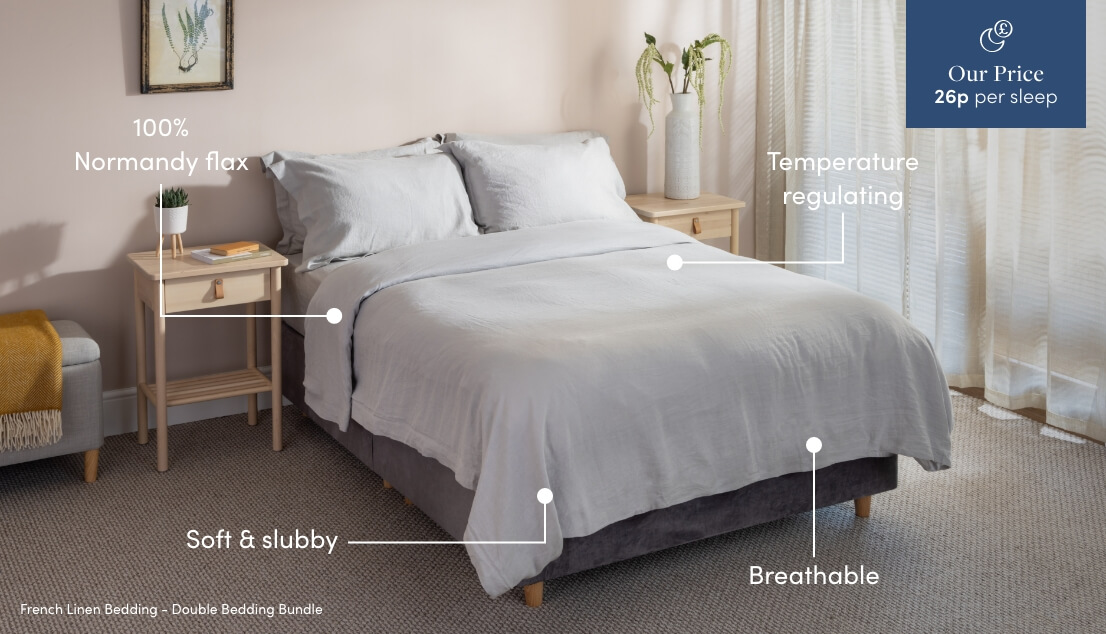Linenshed’s Bestselling Linen Picks for Every Season
Wiki Article
Recognizing Bed Linen: The Eco-Friendly Option for Comfy Living
When you believe about green textiles, bed linen commonly stands out for its unique top qualities. What really establishes bed linen apart from other materials? Let's discover the remarkable globe of bed linen even more.The Beginnings of Bed Linen: From Flax to Fabric

Bed linen, one of the earliest textiles recognized to humanity, has an interesting trip that begins with the simple flax plant. As soon as harvested, the flax stalks undergo a process called retting, where they're soaked to divide the fibers from the woody components.
When you see linen textile, you're experiencing centuries of craftsmanship. The weaving procedure transforms those spools of thread right into the stunning, resilient fabric you enjoy. Bed linen has been cherished for its natural appearance and really feel, making it a preferred for whatever from garments to home textiles. So, following time you touch linen, remember its abundant history that connects you to ancient societies and their standard practices - Australia Linen.
The Distinct Quality of Bed Linen
One of the standout functions of this remarkable material is its breathability. When you wear bed linen, you'll observe just how it allows air to distribute, keeping you cool on hot days. This building makes it a perfect choice for summertime clothing and bedding.Bed linen also boasts outstanding moisture-wicking abilities, drawing sweat away from your skin and allowing it to vaporize promptly. You will not really feel clammy, also in humid problems. In addition, linen is sturdy, typically coming to be softer and a lot more comfortable with each clean, which suggests it can stand the examination of time in your wardrobe.
One more one-of-a-kind aspect is its natural structure; the slight abnormalities give linen a personality that boosts your style. Plus, it withstands wrinkles better than many other fabrics, so you can appreciate a kicked back yet polished appearance without much initiative. Welcome bed linen, and you'll appreciate its convenience and special charm.
Ecological Advantages of Linen
When you select linen, you're not simply going with a beautiful textile; you're also supporting lasting manufacturing techniques. Linen's compostable and biodegradable nature makes it a wise option for the environment. And also, it needs significantly much less water to generate compared to various other fabrics, assisting conserve this valuable resource.Lasting Manufacturing Practices
Although several fabrics have significant environmental influences, linen attracts attention because of its lasting production practices. When you pick linen, you're choosing for a textile made from the flax plant, which requires very little water and pesticides. This resilient crop can flourish in bad soil problems, reducing the requirement for chemical plant foods. Additionally, the whole flax plant is utilized in production, lessening waste and advertising resource efficiency.Bed linen production is usually less energy-intensive contrasted to other textiles, as it includes all-natural procedures instead of synthetic therapies. By sustaining bed linen, you're contributing to an extra sustainable textile industry that focuses on eco-friendly practices. Selecting linen not only enhances your comfort yet also aligns your values with ecological obligation.
Biodegradable and Compostable Material
Bed linen's environmentally friendly nature extends past its sustainable production; it's compostable and additionally naturally degradable, making it an exceptional selection for environmentally aware customers. When you pick linen items, you're deciding for products that break down naturally, returning nutrients to the earth. Composting bed linen can enrich soil, advertising healthy and balanced plant growth.Reduced Water Usage
One of the standout advantages of bed linen is its reduced water consumption throughout cultivation. Unlike cotton, which calls for substantial watering, bed linen's flax plant thrives on very little water, making it an extra lasting choice. You'll appreciate recognizing that for every single lots of bed linen produced, significantly less water is required contrasted to many other textiles. This implies that choosing linen assists preserve essential freshwater resources, which is essential in today's environment. Furthermore, bed linen's all-natural dry spell resistance allows it to grow in less-than-ideal conditions, additionally reducing its ecological effect. By deciding for bed linen, you're not just investing in high quality; you're also supporting a textile that promotes accountable water usage and adds to a much healthier world for future generations.Bed linen vs. Various Other Fabrics: A Contrast
When you contrast bed linen to other textiles, you'll discover its superior breathability and convenience, making it excellent for warm climate. And also, linen sticks out for its sturdiness and long life, frequently outliving numerous typically used products. As you consider your options, the ecological impact of each fabric will certainly also play a vital duty in your decision.Breathability and Comfort
Bed linen stands out among materials for its amazing ability to allow air blood circulation. Unlike synthetic fabrics, which can catch warmth and dampness, linen's natural fibers wick away sweat, maintaining you great and dry.Cotton is frequently applauded for its gentleness, however it does not match bed linen's breathability. Even blends may not use the same ventilation. If you focus on comfort, particularly in summer, linen should be your go-to option. It not just keeps you really feeling fresh yet also brings an ageless elegance to your wardrobe.
Durability and Durability
While many materials supply differing levels of durability, linen genuinely excels in durability, making it a smart financial investment for your closet. Unlike cotton or synthetic products that might wear out swiftly, bed linen obtains stronger with each laundry. You'll locate that linen's breathable nature additionally reduces wear from sweat and moisture, which can harm various other materials.Environmental Influence Contrast
Although several textiles add to ecological issues, linen stands out for its environmentally friendly high qualities. Unlike cotton, which needs enormous water resources and pesticides, linen is made from flax, a plant that prospers on marginal water and needs fewer chemicals. This means you can really feel great regarding your option while decreasing your carbon footprint.When compared to artificial materials like polyester, bed linen's biodegradability shines. While polyester can take centuries to decay, linen breaks down normally, returning nutrients to the soil.
Picking linen not only promotes sustainable farming techniques but also sustains a healthier planet. By going with bed linen over traditional textiles, you're making a conscious choice that profits both your convenience and the environment.
Caring for Your Bed Linen Textiles
To guarantee your bed linen fabrics remain in great condition, you'll want to adhere to some straightforward treatment standards. Wash your linen in cool water on a mild cycle to stop it from reducing or losing its form. Prevent utilizing bleach, as it can harm the fibers. Rather, select a moderate detergent that's without severe chemicals.When it pertains to drying out, air drying is best. If you make use of a clothes dryer, select a low warm setup and remove the products while they're still somewhat damp to minimize creases. Iron the bed linen while it's still damp for less complicated handling, or heavy steam it to keep it looking crisp.
For storage space, keep your linen in a great, dry location. Stay clear of direct sunlight to stop fading. With these simple practices, your bed linen textiles will maintain their elegance and last for several years, making them a lasting addition to your way of living.
Including Linen Into Your Home Style
Caring for your bed linen fabrics not only protects their quality yet also opens up a world of opportunities for including them into your home design. You can start little by adding bed linen throw pillows see it here to your sofa, instantly boosting the space with structure and warmth. Consider bed linen drapes that filter sunshine magnificently, producing a soft, airy environment in any type of space.For an extra rustic appearance, attempt using linen table linens or runners during dishes; they add a classy touch and are simple to clean. If you're feeling daring, mix and suit various linen colors and patterns to produce a distinct, layered impact.
Don't neglect regarding bed linen coverings-- drape one over a chair or your bed for a welcoming feel. By attentively integrating bed linen into your design, you enhance both comfort and style, making your home a peaceful resort.
The Future of Linen in Sustainable Living
As consumers increasingly focus on sustainability, bed linen emerges as a frontrunner in eco-friendly textiles. Its manufacturing uses much less water and chemicals contrasted to traditional cotton, making it a much more eco accountable option. As you look in the direction of a lasting future, integrating linen right into your closet and home can greatly reduce your carbon impact.Ingenious brands are now concentrating on lasting practices, from making use of organic flax to executing circular economic climate principles. You'll find that bed linen's longevity indicates it lasts longer, decreasing the need for regular substitutes.
In addition, as more individuals embrace minimalist way of livings, bed linen's ageless appeal and versatility will maintain it pertinent. By selecting linen, you're not just opting for convenience; you're additionally sustaining sustainable techniques.
In the upcoming years, the demand for linen is expected to grow, strengthening its place in a much more eco-conscious globe. Take into consideration making bed linen a staple in your sustainable living journey.
Regularly Asked Inquiries
Is Linen Suitable for People With Allergies?
Yes, bed linen's all-natural fibers are hypoallergenic, making it suitable for individuals with allergies. Its breathable nature helps in reducing moisture and bacteria accumulation, adding to a much healthier sleeping environment. You'll likely locate it comfy and secure.Can Linen Be Colored Conveniently?
Yes, you can color bed linen easily. Its all-natural fibers take in dyes well, permitting dynamic shades. Just make particular you utilize the right color kind and follow proper techniques to attain the desired results without damaging the textile.How Does Bed Linen Compare in Resilience to Cotton?

What Weight of Linen Is Ideal for Summertime Garments?
For summertime clothing, lightweight bed linen around 4 to 5 ounces per yard is excellent. It maintains you trendy, breathable, and comfortable in warm weather (Linenshed). You'll appreciate how it drapes and relocations with you easily
Can Linen Be Utilized for Outdoor Furnishings?
Yes, you can utilize linen for exterior furnishings. It's durable and breathable, making it an excellent selection for warm weather condition. Simply make certain to choose a dealt with variation to stand up to the components and keep its look.Verdict
Integrating linen right into your life not just enhances your comfort yet also supports an extra lasting future. With its special residential properties and minimal ecological impact, linen is a clever option for your home décor and way of living.Bed linen's compostable and biodegradable nature makes it a smart choice for the atmosphere. By incorporating linen right into your over at this website home, you're not simply appreciating its convenience and resilience; you're also helping and supporting environmentally friendly techniques create a much healthier earth. The Future of Bed Linen in Lasting Living.

Report this wiki page